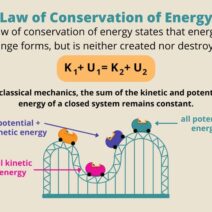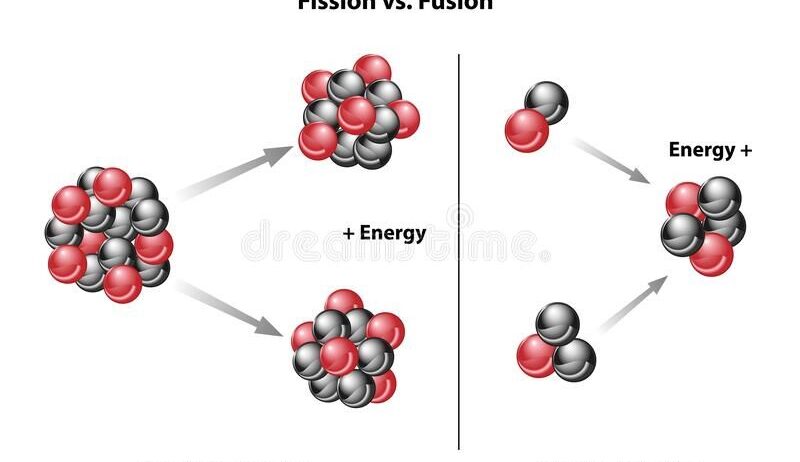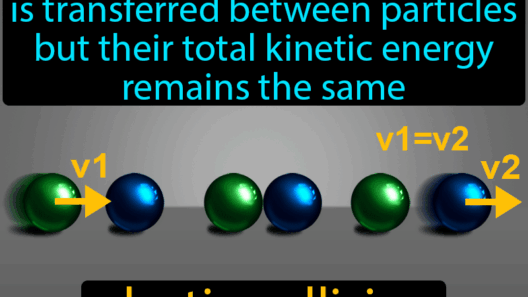The realm of nuclear reactions captivates not only scientists but also the broader public, as it touches upon fundamental principles of physics and the intricate relationships governing energy transformations. Observers often marvel at the sheer power derived from the nuclear processes of fission and fusion, leading to an essential inquiry: Is energy conserved in nuclear reactions? To answer this question, one must delve into the intricacies of these reactions, explore the concept of conservation of energy, and examine the underlying mechanisms that propel these astonishing phenomena.
At its core, the principle of energy conservation, enshrined in the law of conservation of energy, posits that energy cannot be created or destroyed but can only be transformed from one form to another. This principle is foundational in understanding nuclear reactions, both fission and fusion. In fission, heavy atomic nuclei, such as uranium-235 or plutonium-239, undergo a split when struck by a neutron, resulting in the formation of lighter nuclei, alongside the release of significant quantities of energy. Conversely, fusion involves the merging of light nuclei, typically isotopes of hydrogen like deuterium and tritium, to form a heavier nucleus, such as helium, also accompanied by a substantial release of energy.
The crux of energy conservation within these reactions lies in the mass-energy equivalence principle articulated by Albert Einstein’s celebrated equation, E=mc². This relationship elucidates how mass can convert into energy and underscores the dynamic interplay between mass and energy in nuclear processes. In both fission and fusion, the total mass of the resulting particles is less than the original mass of the reactants. The discrepancy in mass is transformed into energy, hence profoundly illustrating conservation at its most fundamental level.
When examining nuclear fission, consider its application in nuclear power plants. The fission process initiates a chain reaction, where each reaction releases neutrons that induce further fission reactions. This self-sustaining chain reaction is meticulously controlled to harness energy efficiently. During fission, the mass lost, when converted to energy, is harnessed to produce steam, which drives turbines to generate electricity. Thus, in fission, energy is conserved through conversion from mass and ultimately transformed into usable electricity.
In stark contrast, fusion, the process that powers our sun and other stars, operates under an entirely different set of conditions. At extreme temperatures and pressures, nuclei can overcome their electrostatic repulsion and collide to fuse. The energy released during fusion processes is immense, a fact that holds the key to the prospects of fusion as a clean energy source. The mass defect, or the mass that is lost during the reaction, is converted into energy just as in fission. Consequently, energy conservation remains intact, demonstrating itself in the form of energy released as light and heat—a transformative outcome of the nuclear force at work.
Despite the total preservation of energy during these nuclear reactions, the implications of energy production present a dual-edged sword. The extensive energy yields from fission have facilitated advancements in technology and powered societies, yet they come with profound challenges regarding safety, radioactive waste, and potential weaponization. The catastrophic events at Chernobyl and Fukushima underscore the dire need for stringent safety protocols and responsible governance in harnessing fission energy.
Fusion, considered the “holy grail” of energy production, promises a plethora of advantages—abundant fuel supply, minimal radioactive waste, and enhanced safety. However, the technical barriers to achieving sustained and controlled fusion remain insurmountable, leading researchers to pour resources into understanding plasmas, magnetic containment, and laser-induced fusion. The sheer potential of fusion energy to reshape the landscape of energy consumption hints at a future where energy conservation principles could propel human civilization to new heights.
It is essential to acknowledge that while energy is conserved in nuclear reactions, the processes inadvertently reveal deeper nuances regarding our relationship with energy. Fission and fusion both encapsulate humanity’s complex narrative of discovery, technological advancement, and ethical deliberation. The quest for harnessing nuclear energy mirrors our broader responsibility towards sustainable energy use and conservation of resources. Thus, while the laws of physics remain steadfast in terms of energy conservation, the societal implications and technological advancements inspire a sophisticated dialogue about sustainability, stewardship, and innovation.
As society endeavors to address the paramount challenges of climate change and energy demands, nuclear fission and fusion stand at the intersection of scientific potential and ethical responsibility. Recognizing the significance of energy conservation in these reactions can herald innovative pathways as humanity seeks to minimize its environmental footprint while harnessing the power of the atom. The allure of nuclear reactions—fission and fusion—extends beyond mere fascination, inviting a thorough examination of our future energy landscape and the sustainable principles that ought to govern it.








